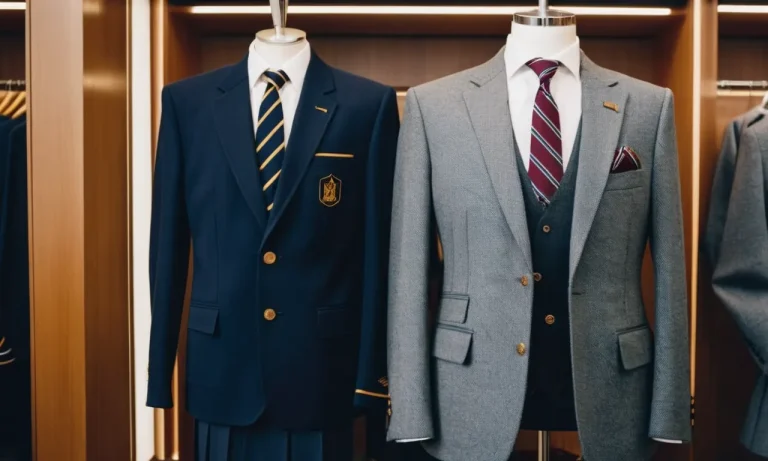Navigating the world of military schools can be a daunting task, especially when it comes to prestigious institutions like Texas A&M University. With its rich history and unique traditions, many prospective students and their families wonder if this esteemed institution falls under the category of a military school.
If you’re short on time, here’s a quick answer to your question: Texas A&M University is not a traditional military school, but it does have a strong military heritage and a prominent Corps of Cadets program.
In this comprehensive article, we’ll delve into the details of Texas A&M’s military connections, explore the Corps of Cadets program, and provide insights into the university’s overall academic and campus life.
Whether you’re considering attending Texas A&M or simply curious about its military ties, this guide will equip you with the knowledge you need to make an informed decision.
Texas A&M’s Military Heritage
The Aggie Tradition
Texas A&M University, fondly known as “Aggieland,” boasts a rich military heritage that has become deeply ingrained in its culture and traditions. The term “Aggie” itself is a nod to the school’s agricultural roots, but it has come to represent the unwavering spirit and camaraderie that permeates the campus.
From the iconic Aggie Ring to the time-honored “Midnight Yell” practice, the university’s military legacy is woven into the fabric of its identity.
Founding as a Military Institution
Established in 1876, Texas A&M University was originally founded as the Agricultural and Mechanical College of Texas, with a primary focus on military training and education. In its early years, the university operated as a military institution, with all students required to participate in the Corps of Cadets and receive military instruction.
This military emphasis was a reflection of the state’s commitment to preparing its citizens for potential conflicts and ensuring a well-trained defense force.
According to Texas A&M’s data, as of Fall 2022, the Corps of Cadets boasted an enrollment of over 2,600 students, making it one of the largest uniformed student bodies outside of the service academies. This impressive statistic highlights the enduring legacy of the university’s military roots.
Transition to a Civilian University
While Texas A&M has evolved into a respected civilian university, its military heritage remains an integral part of its identity. The Corps of Cadets, though no longer mandatory for all students, continues to thrive and instill the values of leadership, honor, and service in its members.
The university’s ROTC programs, spanning the Army, Air Force, Navy, and Marine Corps, provide opportunities for students to pursue military commissions while earning their degrees.
Texas A&M’s commitment to its military heritage is evident in its numerous traditions and ceremonies. The iconic Aggie Muster, a solemn gathering held annually on April 21st, honors and remembers all Aggies who have passed away in the previous year.
This ceremony, steeped in military symbolism, is a poignant reminder of the university’s enduring connection to its military roots and the sacrifices made by those who have served their country.
The Corps of Cadets Program
Texas A&M University’s Corps of Cadets program is a prestigious leadership training program that has been an integral part of the university since its founding in 1876. This program is designed to develop well-rounded individuals who are prepared for leadership roles in both military and civilian life.
Let’s delve into the details of this esteemed program.
Overview of the Corps
The Corps of Cadets is one of the largest uniformed student bodies in the nation, with over 2,500 cadets enrolled (source). It is organized into three Air Force and two Army Wings, each with their own unique traditions and customs.
Cadets participate in rigorous training programs that focus on developing leadership skills, physical fitness, and academic excellence. They are expected to adhere to a strict code of conduct and follow a regimented schedule that includes military training, classes, and extracurricular activities.
Requirements and Obligations
- To join the Corps, students must meet certain academic and physical requirements, including a minimum GPA and passing a fitness test.
- Cadets are required to live on campus in designated Corps dorms, wear uniforms, and participate in various Corps activities.
- They must also complete a minimum of eight semesters in the Corps to earn their Corps ring and commission as an officer upon graduation (source).
Benefits and Opportunities
Being a part of the Corps of Cadets offers numerous benefits and opportunities for personal and professional growth. Cadets develop strong leadership skills, discipline, and a sense of camaraderie that prepares them for success in any career path they choose.
The Corps also provides scholarships and financial assistance to eligible students, making a college education more accessible. Additionally, cadets have the opportunity to participate in various extracurricular activities, such as intramural sports, community service projects, and student organizations.
Academic and Campus Life at Texas A&M
Academics and Degree Programs
Texas A&M University offers a diverse range of academic programs across various disciplines. With over 130 undergraduate degree programs and more than 240 graduate degree programs, students have a wide array of options to pursue their academic interests.
The university is renowned for its exceptional programs in engineering, agriculture, and veterinary medicine. According to the U.S. News & World Report, Texas A&M’s College of Engineering ranks among the top 10 in the nation for its undergraduate programs. 😎
Texas A&M boasts a student-faculty ratio of 20:1, ensuring personalized attention and support for students. The university’s commitment to academic excellence is further reflected in its prestigious honors programs, which challenge and nurture high-achieving students through rigorous coursework and research opportunities.
With a diverse range of academic resources, including state-of-the-art laboratories, libraries, and research facilities, Texas A&M provides an enriching learning environment for students to thrive. 👏
Student Organizations and Activities
Beyond academics, Texas A&M offers a vibrant student life with over 1,000 student organizations and clubs catering to various interests and passions. From professional societies and cultural groups to recreational sports and community service organizations, students have ample opportunities to engage in extracurricular activities, develop leadership skills, and forge lasting connections.
🙌
One of the most iconic aspects of Texas A&M’s campus life is its rich tradition of Corps of Cadets, a prestigious student organization that instills leadership, discipline, and integrity. While participation in the Corps is voluntary, it provides a unique military-style training experience for those interested in pursuing careers in the armed forces or developing invaluable leadership skills.
Can’t decide whether to join the Corps? No problem! Texas A&M offers a diverse range of activities to suit every student’s interests. 😉
Campus Facilities and Resources
Texas A&M boasts a beautiful and sprawling campus with state-of-the-art facilities and resources to support student success. The university’s libraries, including the iconic Sterling C. Evans Library, house an extensive collection of books, journals, and digital resources, providing students with access to a wealth of knowledge.
📚
The university’s recreational facilities, such as the Student Recreation Center and the Penberthy Rec Sports Complex, offer a wide range of amenities, including fitness centers, indoor and outdoor courts, pools, and climbing walls.
These facilities promote an active and healthy lifestyle for students while fostering a sense of community. 🏋️♀️
Additionally, Texas A&M provides comprehensive support services, including academic advising, career counseling, and health and wellness resources, to ensure students have the tools they need to succeed both academically and personally.
With a vibrant campus life, world-class facilities, and a supportive community, Texas A&M offers an exceptional experience for students to grow and thrive. 🎉
Frequently Asked Questions
Is the Corps of Cadets Mandatory?
No, the Corps of Cadets at Texas A&M University is not mandatory for all students. It is a voluntary program that students can choose to join or not. Participation in the Corps is a personal choice and a significant commitment.
According to the Corps of Cadets website, approximately 20% of the student body at Texas A&M are members of the Corps. The Corps offers a unique leadership development experience and military training, but it is not required for graduation.
Can Non-Corps Students Participate in Military Training?
Yes, non-Corps students at Texas A&M can participate in military training through the university’s Army and Air Force ROTC programs. While these programs are separate from the Corps of Cadets, they provide students with the opportunity to receive military training and potentially commission as officers in the U.S. Armed Forces upon graduation.
The ROTC programs are open to all students, regardless of their affiliation with the Corps. For more information, you can visit the Army ROTC and Air Force ROTC websites at Texas A&M.
What Career Paths Do Corps Graduates Pursue?
Corps of Cadets graduates from Texas A&M pursue a wide range of career paths, both within and outside the military. Many graduates choose to serve as commissioned officers in the U.S. Armed Forces, including the Army, Air Force, Navy, Marine Corps, and Coast Guard.
According to the Corps of Cadets website, approximately 60% of Corps graduates commission into the military each year. 😊
However, Corps graduates are not limited to military careers. Their leadership training and experience make them highly sought after in various industries, such as business, engineering, law enforcement, and public service.
Some Corps graduates pursue careers in fields like finance, consulting, energy, technology, and healthcare. The Corps of Cadets equips its members with valuable skills, including discipline, teamwork, and problem-solving, which are highly valued in today’s competitive job market. 👏
Regardless of their chosen path, Corps graduates often stand out for their strong work ethic, integrity, and leadership abilities. The Corps experience provides them with a solid foundation for success in whatever career they choose to pursue.
Whether serving their country in uniform or contributing to society in other ways, Corps graduates from Texas A&M are well-prepared to make a positive impact.
Conclusion
Texas A&M University’s rich military heritage and the prestigious Corps of Cadets program have undoubtedly shaped its identity and traditions. While not a traditional military school, the university offers a unique opportunity for students to embrace a military-style education and training through the Corps of Cadets.
However, Texas A&M is also a comprehensive research institution with a diverse range of academic programs and a vibrant campus life. Whether you choose to join the Corps or pursue a civilian path, the university provides a well-rounded educational experience that prepares students for success in various fields.
Ultimately, the decision to attend Texas A&M and potentially join the Corps of Cadets depends on your personal interests, goals, and aspirations. By understanding the university’s military connections and the opportunities available, you can make an informed choice that aligns with your academic and personal aspirations.






